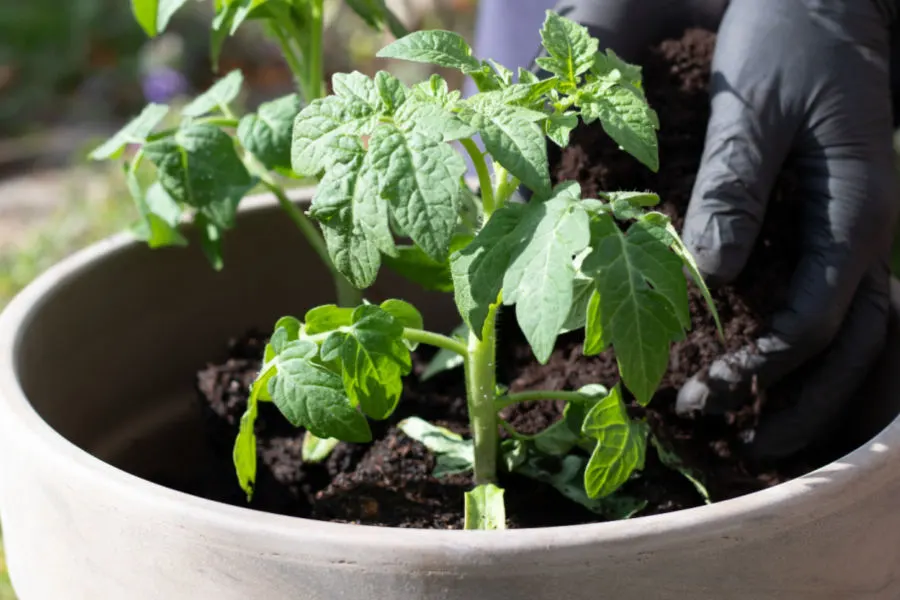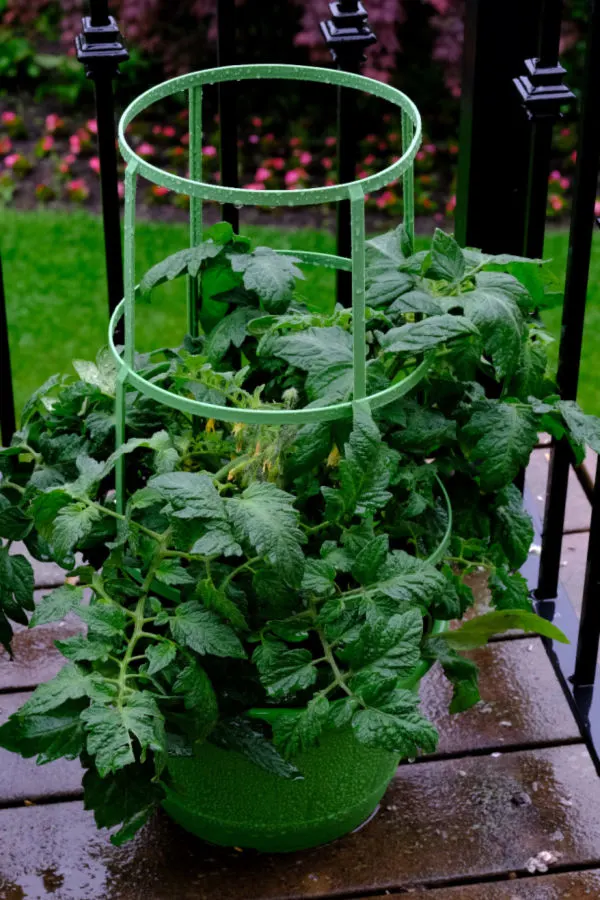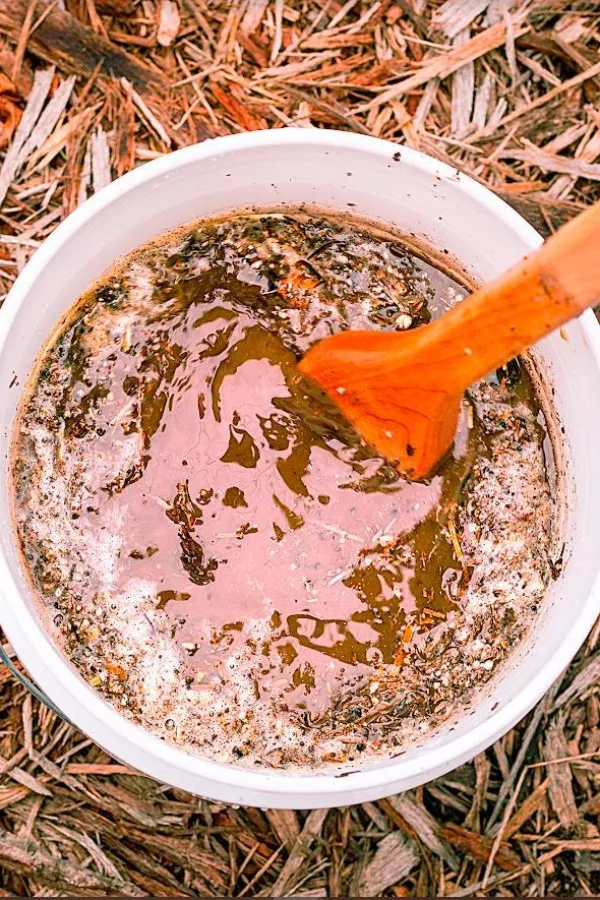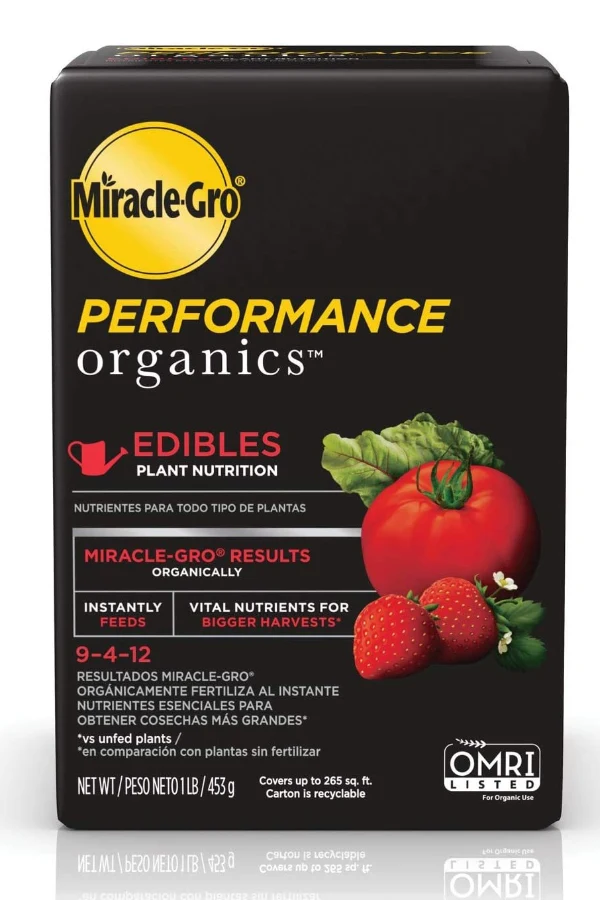Looking for the best way to fertilize the tomato plants you have growing in pots, containers, grow bags or 5 gallon buckets?
Growing tomatoes in containers is becoming more popular than ever. Whether it’s planting a mini cherry tomato plant in a small pot on your back patio to enjoy for salads or snacking, growing a few slicing tomatoes in a hanging tomato grow bag, or growing full size heirloom tomatoes in 5 gallon buckets or large containers – the sky is the limit when it comes to growing tomatoes outside of a traditional garden setting.
There are actually a lot of built in advantages for growing tomatoes in containers. For starters, it doesn’t require a big yard or space. In fact, all you need is a sunny patio, balcony or deck – and you’re in business!

Even better, planting and maintaining tomatoes in containers is far easier than in a traditional garden. There is no need for heavy tilling or digging to plant. Nor is there the worry of constant weeding once the plant starts to grow.
Even More Advantages – How To Fertilize Tomato Plants In Pots, Containers & Buckets
Perhaps best of all, when growing in pots and containers, you are less likely to encounter many of the pests, disease and growing issues that tomatoes can often have.
With your plants being off the ground, pests have a harder time attacking. As for disease and growing issues, the chance of tomato blight and blossom rot are severely reduced as well since the tomatoes are growing in fresh new potting soil each season.
But one thing you do need to do with container tomatoes is provide them with plenty of power – and that means fertilizing is a must. But as you will see below, how and when you give your tomato plants that energy can make a huge difference in just how successful they are!
How To Fertilize Tomato Plants In Pots & Containers
Tomato plants require a tremendous amount of nutrients to grow and produce their fruit. Even in a tradition garden or raised bed setting, tomato plants almost always need more nutrients than the surrounding soil can provide. But when growing in a container, that need is multiplied!

Because of the limited soil space, tomato plants in containers use up the available nutrients quickly. That is why it’s so important to start fertilizing tomatoes growing in containers right from the start.
A steady supply of energy from the get go will help plants develop strong roots, stems and foliage. And that sets the stage for strong blooming and great production later on. But for big success, the fertilizer you provide needs to be given in small but steady doses.
The Dangers Of Over-Fertilizing – How To Fertilize Tomato Plants In Pots, Containers & Buckets
Too much or too powerful of a fertilizer will cause your tomato plants to grow enormous amounts of foliage. They may look dark green and healthy, but unfortunately, they are spending all of the excess energy on growing only foliage and roots – and not blooms.
Over-fertilizing will actually reduce your overall yields. Plants that get too much food will stop producing blooms and simply concentrate on growing bigger. Even worse, their roots will grow too big as well – often leading to the plants becoming root bound.
Of course, under-fertilizing will cause the plant to grow at too slow of a pace. And, that in turn will lead to a smaller harvest as well. So how can you fertilize your tomato plants in containers just right?
The answer is to simply provide your container tomato plants a light but very steady and consistent dose of nutrients – and the easiest and best way to do that is with liquid fertilizer!
Why Liquid Fertilizers Work Best For Tomato Plants In Pots & Containers
Liquid fertilizers are perfect for tomato plants in containers for a couple of very big reasons. First and foremost, they can absorb into the plants quickly. Both through the roots as the liquid leaches into the soil – and through the leaves and stems.
But what also makes using liquid fertilizer on your tomato plants even better is that you can easily control the strength and dose by simply diluting your mix. By weakening the strength of the fertilizer, you can then give your plants a lighter but more regular dose of energy – allowing them to grow at the perfect slow and steady pace that sets the stage for big production!
So how often should you be applying liquid fertilizer to your plants? If giving a light and steady dose, the feedings should be applied every 7 to 10 days – and right from the start! With that in mind – here is a look at the best liquid fertilizers to use on your plants:
Compost Tea – How To Fertilize Tomatoes In Pots, Containers & Buckets
Compost tea is 100% organic and an excellent choice for powering tomatoes. Made from simply soaking compost in water, the nutrients are easy for plants to soak up. It also happens to be free to use if you have your own compost pile!

Even better, the nutrients in compost tea are so pure, stable and low, you don’t need to dilute the mix when applying. For best results, simply water your plants once a week with the tea. See : How To Make Homemade Compost Tea
Commercial Liquid Fertilizers – How To Fertilize Tomatoes In Pots, Containers & Buckets
When growing any edibles, it is always best to choose an organic fertilizer. The good news is there are plenty of great commercial organic fertilizers on the market today to choose from. But when selecting a commercial fertilizer, be sure to select one that does not have an overly high nitrogen content.
Nitrogen is important for plant growth and foliage growth. But phosphorous is key for fruit production and potassium is big for helping plant health and ripening the fruit. When looking at N-P-K ratios, look for a balance, or one that is higher in the phosphorous and potassium numbers. Avoid any fertilizer with a higher nitrogen rating than the other two.
As for diluting, best practice is to dilute the mix to about 1/3rd of the recommended rate. This will allow you to fertilize your plants every seven to ten days without overpowering them. Product Affiliate Link : Liquid Performance Organic Edibles Fertilizer
Worm Casting Tea – How To Fertilize Tomatoes In Pots, Containers & Buckets
Worm casting tea is another great organic option for powering tomatoes. Much like compost tea, it can be used at full strength and delivers the perfect low and steady punch of power for your tomato plants.
To create your own liquid casting tea for tomatoes, steep 1 cup of castings in one gallon of water and allow it to soak in for a few days. Shake up or stir the castings a few times each day to help them soak into the water. Then simply strain and water your plants!
Worm casting tea is great for all of your vegetable plants, annuals and more. And be sure to put the leftover grounds after straining into your compost pile! Product Affiliate Link : Pure Worm Castings
Here is to powering your container tomatoes this year with liquid fertilizer – and to having your best crop of tomatoes ever!
Follow Our Facebook Page For Great Gardening Tips And Advice! This Is My Garden Facebook Page
This Is My Garden is a garden website created by gardeners, for gardeners. Jim and Mary Competti have been writing gardening, DIY and recipe articles and books and speaking for over 15 years from their 46 acre Ohio farm. They publish three articles every week, 52 weeks a year. Sign up today to follow via email, or follow along!

